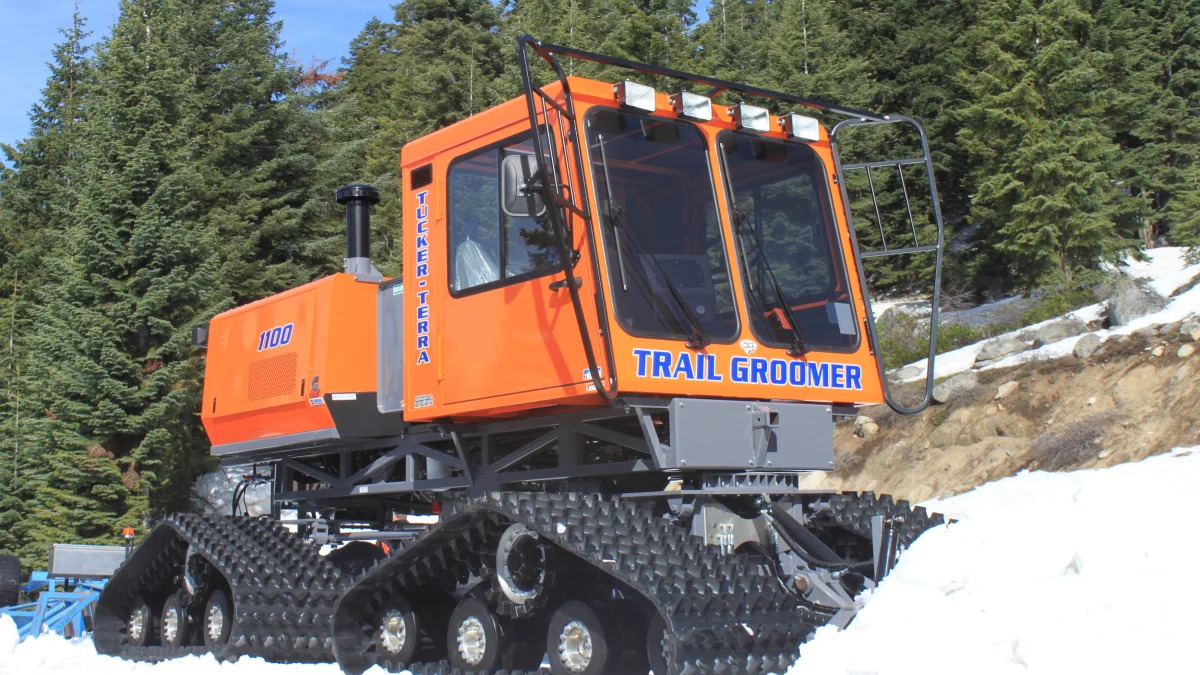Here's a fun-sounding vehicle perfect for the cold and snow that's currently gripping much of North America. Tucker — no, not that Tucker — just marked its 75th anniversary making the Sno-Cat, its orange-painted, four-tread snow vehicles that have inspired backcountry skiers, collectors — and increasingly, the super rich.
Bloomberg in a recent story writes that demand for the Medford, Ore.-based company's products is soaring on demand from the wealthy, who need a way to get to their backcountry mountain retreats. They're also in demand from collectors and gearheads who also love snow, like two anonymous collectors who are believed to have amassed more than 200 vintage Sno-Cats. The value of vintage models has reportedly tripled in the past five years to well over $100,000 for a fully restored rig.
Tucker Sno-Cat Corp. claims to be the world's oldest surviving snow vehicle manufacturer, launched by E.M. Tucker in 1942 out of a desire to design a vehicle for traveling over the kind of deep, soft snow found in the Rogue River Valley of his childhood. It was four Tucker Sno-Cat machines that helped English explorer Vivian Fuchs and his 12-man party make the first 2,158-mile overland crossing of Antarctica in 1957-58.
While many of the company's competitors either shuttered or adapted to serving ski resorts with wider, heavier treads, Tucker has stuck to its formula of making lightweight vehicles to travel over deep snow. Many Tuckers use Chrysler's flat six-cylinder engine, or its Dodge Hemi V8 for larger Sno-Cats, mounted rear or centrally, with basic, no-frills aluminum cabins. Sno-Cats all have four articulating tracks that are independently sprung, powered and pivoted at the drive axle. Track options come in three different types: conventional steel grouser belt track, rubber-coated aluminum grouser belt track, and one-piece all-rubber track. Steering is hydraulically controlled by pivoting the front and rear axles for smooth movement over undulating terrain with minimal disturbance of the ground cover.
The company today makes 75 to 100 Sno-Cats a year for customers including the U.S. military, oil-drilling crews in cold places like Alaska and North Dakota, and utilities. But demand is so high that it's launched a profitable service reselling and refurbishing old machines. E.M. Tucker's grandson, Jeff McNeil, now head of this division, scours Google Earth for abandoned Sno-Cats rusting in backyards that he might be able to acquire and fix up. The company has even ventured into agriculture, figuring its lightweight vehicles are a good match for farmers who need gentle equipment to work on soft ground, such as rice paddies.
The entry-level 2000Xtra Lite starts at $125,000, seats four and boasts a top speed of 18 mph.
Related Video:










Sign in to post
Please sign in to leave a comment.
Continue